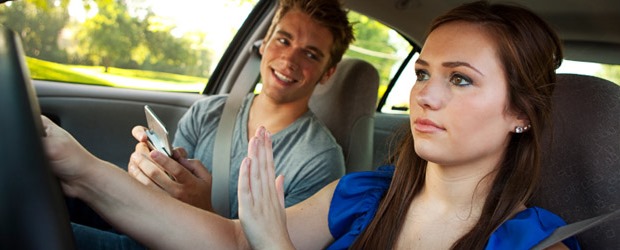

.jpg)
Yogi Schulz
@itworldca
Published: January 8th, 2015
Safety experts worry that automobiles have become compact home theaters with wheels.
The 2015 Consumer Electronics Show included several displays of the latest automobile smartphone integration, navigation, safety and entertainment features. Various automobile manufacturers proudly announced their latest advances on the road to the self-driving car. At times it felt like CES is becoming as important to automobile manufacturers as the Detroit Auto Show.
Safety experts worry that automobiles have become compact home theaters with wheels. With music playing, arriving email beeping, the navigation system giving directions and the phone ringing, is it any wonder that the lane departure warning system is kicking-in? So how are automobile manufacturers helping the driver focus on driving?
Distracted driving has become the number one cause of car accidents, even ahead of drunk driving. Volkswagen recently illustrated the dangers of texting and driving with this dramatic video that has been shown over 600,000 times.
BMW head-up display
BMW and a few other manufacturers have begun to offer a head-up display. The term was previously associated only with military fighter planes to display urgent information to help the pilot maintain situational awareness and avoid being shot down.
Head-up displays are part of auto maker efforts to keep drivers focused on the road. They project information onto the windshield into the driver’s line of site to the road, eliminating downward or sideways glances for information that are enough to cause an accident.
Not only does a head-up display keep the driver focused on the road, it lessens eye strain and increases safety. BMW offers customization for display brightness, height, rotation angle and content such as speed, cruise control status, navigation instructions, system warning lights, engine RPM’s and gear selection.
Volkswagen Golf R Touch concept car
The interior of this Golf shown at CES contains multiple touch screens and many sensors so that a combination of touch, bodily movement and gestures operate car’s features.
For example, the camera in the roof lining tracks hand movements and turns those movements into commands. Reaching for the roof will make the controls for the sunroof appear on the touch screen. Moving a hand backwards will then open the sunroof while moving it forward again will close it. All the while the driver is supposed to be concentrating on the road ahead and not marveling at the technology.
Similarly, running a finger along the edge of a seat will bring up the controls for adjusting the seat position on a touch screen.
Proximity sensors and cameras also mean that buttons will appear on the touch screen and grow larger as a hand moves closer. Larger makes the controls easier to press with less concentrated effort and therefore less distraction from driving.
The Golf attempts to address the challenge of how to offer access to more and more features without increasing driver distraction. Volkswagen’s answer is the three touch screens and almost no mechanical switches. Everything from the air conditioning to increasing the stereo volume to invoking the navigation is taken care of by touch or swipe gestures initiated through the proximity sensors.
What do you think about automobile technology to minimize driver distraction? Is it useful or just another example of technology attempting to compensate for shortcomings in human behavior?
Read more: http://www.itworldcanada.com/blog/does-automotive-technology-help-or-distract-drivers/100882#ixzz3OOFJ8aC8
or visit http://www.itworldcanada.com for more Canadian IT News



